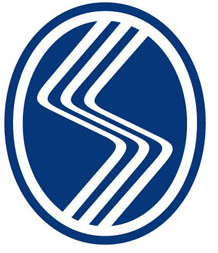Boyar maddelerin ve çoğu yardımcı kimyasal olan ve yüzey aktif madde özelliği taşıyan sürfaktanların kullanıldığı tekstil endüstrisinden kaynaklanan atıksularda, kompleks yapıya sahip birçok bileşik mevcuttur. Meydana gelen atıksuyun içeriği üretim prosesine bağlı olarak değişmekte olup genellikle çözünmüş katı, yüksek KOİ, güçlü renk ve tuz gibi karakteristik özelliklerinden dolayı yüksek miktarda kirlilik yükü içermektedir. Yüksek KOİ ve güçlü renk özelliklerinden dolayı tehlikeli, toksik ve kanserojenik olduğu bilinen bu tip atıksular uygun yöntemlerle arıtıldıktan sonra alıcı ortama deşarj edilmelidir. Geleneksel arıtım yöntemleri yetersiz kalmaktadır. Bu sebeple son yıllarda önem kazanan İleri Oksidasyon Prosesleri (İOP) bu tip atıksuların arıtımında oldukça etkilidir. Bu çalışmada, tekstil endüstrisi boyama tankından alınan atıksuyun EO, EC ve EC ardından EO (EC+EO) olmak üzere 3 farklı yöntem ile arıtılması incelenmiştir. EO prosesinde anot olarak Ti/Ru-Ir ve katot olarak paslanmaz çelik elektrot, EC'de ise anot ve katot olarak demir elektrot kullanılmıştır. NaCl tuzu ile mevcut atıksuyun iletkenliği sağlanmıştır. EO prosesi için optimum şartlar NaCl dozu: 0,75 g/L, pH: 2, akım yoğunluğu: 4,77 mA/cm2, süre: 240 dk olarak belirlenmiş olup optimum şartlarda elde edilen KOİ giderim verimi % 56,87 renk giderim verim değerleri λ: 436, 525, 620 nm'de verilen sıra ile % 56,12 71,59 49,26 kinetik açıdan değerlendirildiğinde birinci mertebe denklemi ile hesaplanarak korelasyon katsayısı (R2) 0,9541 ve k: 0,0026 1/dk enerji tüketim değeri ise 269,67 kWh/kg KOİ EC prosesi için, optimum şartlar NaCl dozu: 1 g/L, pH: 8, akım yoğunluğu: 1,65 mA/cm2, süre: 20 dk olarak belirlenmiş olup optimum şartlarda elde edilen KOİ giderim verimi % 69,81 renk giderim verim değerleri λ: 436, 525, 620 nm'de verilen sıra ile % 96,37 98,38 98,47 kinetik açıdan değerlendirildiğinde pseudo ikinci mertebe denklemi ile hesaplanarak korelasyon katsayısı (R2) 0,9564 ve k: 2,22E-04 1/dk enerji tüketim değeri ise 5,80 kWh/kg KOİ, EC+EO prosesinde, EC için EC prosesinden elde edilen optimum sonuçlar kullanılmıştır ve EO için optimum şartlar pH: 6, akım yoğunluğu: 8,97 mA/cm2, süre: 240 dk olarak belirlenmiş olup optimum şartlarda elde edilen KOİ giderim verimi % 86,91 kinetik açıdan değerlendirildiğinde pseudo ikinci mertebe denklemi ile hesaplanarak korelasyon katsayısı (R2) 0,9963 ve k: 9,42E-05 1/dk enerji tüketim değeri ise 1500,08 kWh/kg KOİ olarak bulunmuştur. Anahtar kelimeler: Tekstil endüstrisi boyama atıksuyu, elektrooksidasyon, elektrokoagülasyon, elektrokoagülasyon ardından elektrooksidasyon, Ti/Ru-Ir elektrot
There are many compounds with complex structure in the wastewaters originating from the textile industryof dyestuffs and surfactants that are manyauxiliary chemicals and have surface active agent property. The content of the wastewater produced varies depending on the production processes and usually contains a high amount of pollution load due to its characteristics such as dissolved solid, high COD, strong color and salt. This type of wastewater known to be dangerous and toxic and carcinogenic due to its high COD and strong color properties can then be discharged to the receiving environment when purified by appropriate methods. Traditional treatment methods are insufficient to treat the existing wastewater. For this reason, Advanced Oxidation Processes (IOP) which have gained importance in recent years are highly effective in the treatment of this type of wastewater. In this study, it was carried out that the wastewater taken from the textile industry dyeing tank was purified by EO, EC and EC followed EO (EC+EO) methods. In the EO processes have been used Ti/Ru-Ir as anode and stainless steel electrode as cathode while in EC processes have been used iron electrode as anode and cathode. The conductivity of the existing wastewater has been provided with NaCl salt. For EO process, optimum conditions have been determined NaCl dose: 0.75 g/L, pH: 2, current density: 4.77 mA/cm2, duration: 240 min. In optimum conditions determined was found as COD removal efficiency 56.87 %, color removal efficiency values at λ: 436, 525, 620 nm 56.12, 71.59, 49.26 % respectively in terms of kinetics, the correlation coefficient (R2) 0.9541 and k: 0.0026 1/min by using the first order equation, energy consumption value 269.67 kWh/kg KOI for EC process, optimum conditions have been determined NaCl dose: 1 g/L, pH: 8, current density: 1.65 mA/cm2, duration: 20 min. In optimum conditions determined was found as COD removal efficiency 69.81 %, color removal efficiency values at λ: 436, 525, 620 nm 96.37, 98.38, 98.47 % respectively in terms of kinetics, by using the pseudo second order equation was calculated as R2: 0.9564 and k: 2.22E-04 1/min, energy consumption value 5.80 kWh/kg KOI in EC+EO processes, for EC have been used optimum results obtained from EC prosses, and determined pH: 6, current density: 8,97 mA/cm2, duration: 240 min. In optimum conditions determined was found as COD removal efficiency 86.91 %, in terms of kinetics, R2: 0.9963 and k: 9.42E-05 1/min by using the pseudo second order equation, energy consumption value 1500.08 kWh/kg KOI. Keywords: Textile industry dyeing wastewater, electrooxidation, electrocoagulation, electrocoagulation followed electrooxidation, Ti/Ru-Ir electrode












